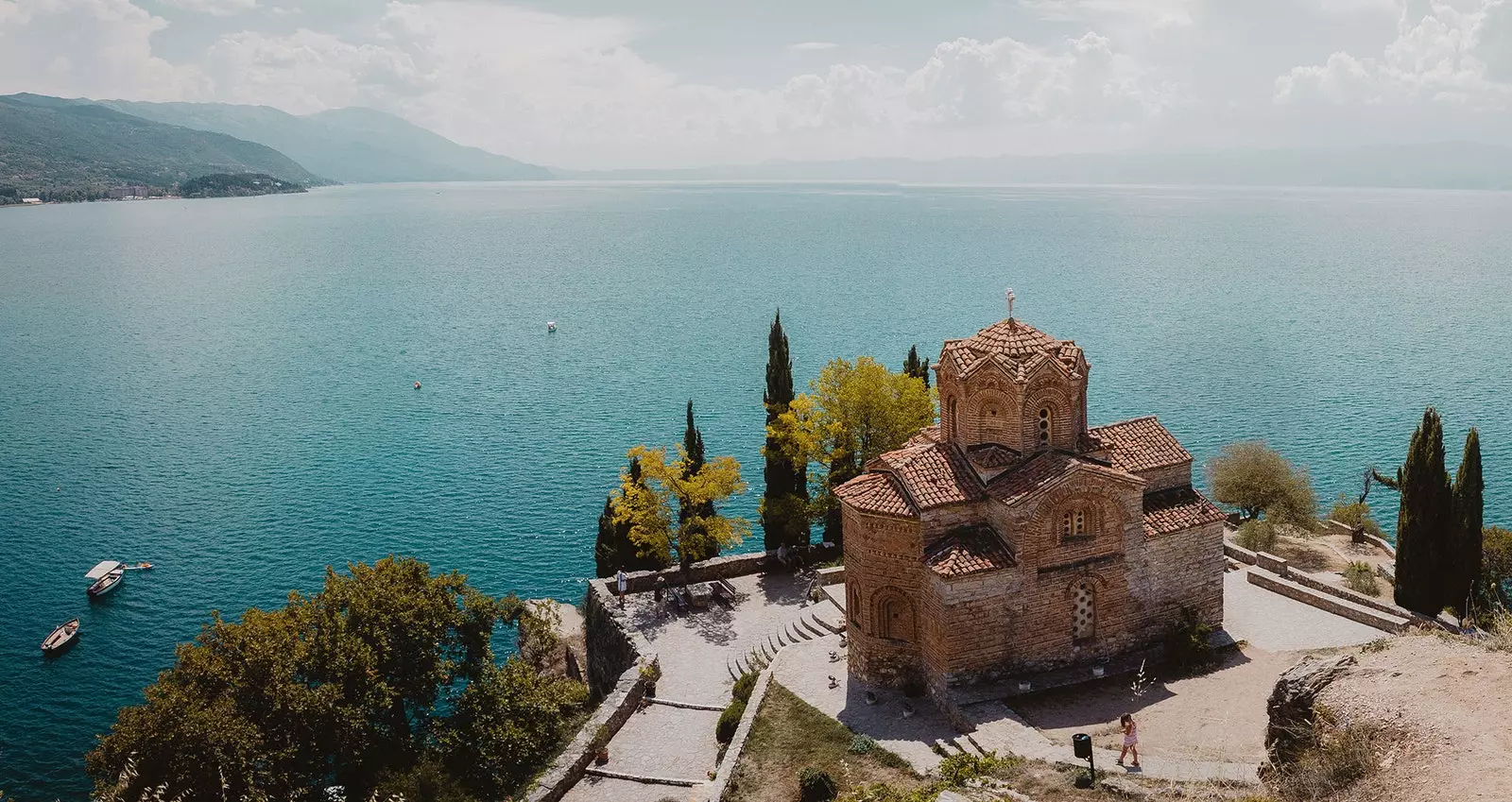
Spherical route to cross three great jewels of North Macedonia
** [REPORTING FROM STRUGA]** Decked out in statues and neoclassical buildings of dubious taste, Skopje has the social charms of all the capitals of the balkans . Generally, it is the starting point for those who visit North Macedonia.
But beyond the capital, this country of green mountains and mighty rivers is a good option for those looking for get into nature or appreciate the passage of important civilizations in buildings, monuments and streets. starting and ending in Skopje, We propose a circular route through the places that no traveler should miss visiting in North Macedonia: Mavrovo, Ohrid and Bitola.
100 kilometers from Skopje in a south-westerly direction, and for the modest price of 5 euros in public transport , the Mavrovo National Park It is a getaway always recommended by locals.
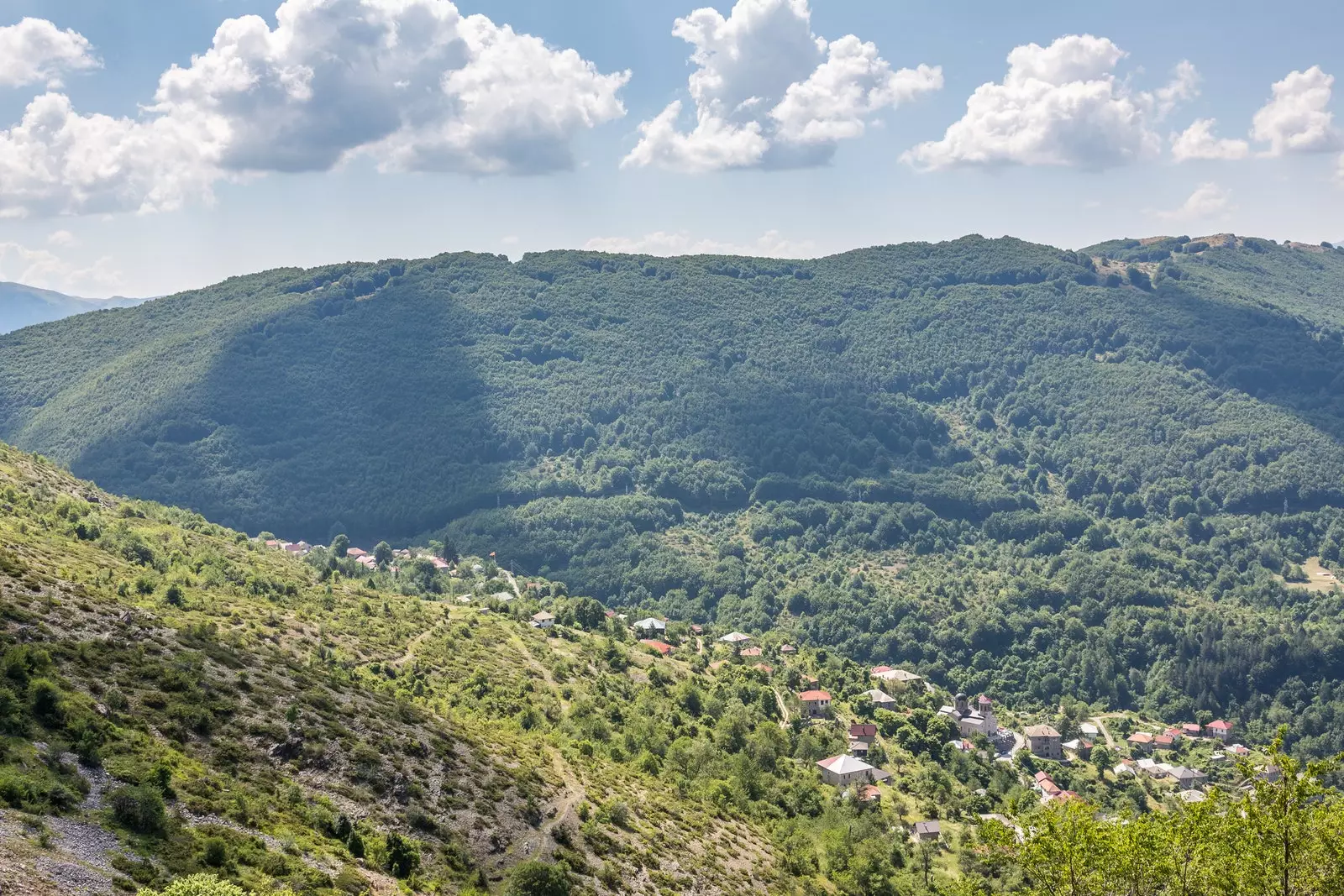
Hiking trails around Mavrovo
In winter, it is one of the main ski resorts in ** Macedonia **. In summer, it is a natural environment that allows walkers and cyclists enter between mountains whose neuralgic center is the Mavrovo artificial lake . There, highlights the Church of Saint Nicholas, that depending on the volume of the water can be partially submerged.
In this region we can enjoy steep waterfalls and activities such as kayaking, boat trips and fishing. For those who prefer the purest mountain, it is easy to escape to the **Albanian border** to climb the highest peak in Macedonia : the Korab, 2,764 meters . Accommodation prices start at 10 euros in hostels, although for double that you can get a hotel room, and there are nightlife venues such as Ratrak.
A little further south, after crossing the thousand-year-old monastery of Saint John the Baptist , appear Galiçnik , the highest village in the country. Most of the year Galiçnik is almost empty, but in July, when it is celebrated the wedding between two lovers related to the village, becomes a national holiday adorned with the most traditional clothes, music and food.
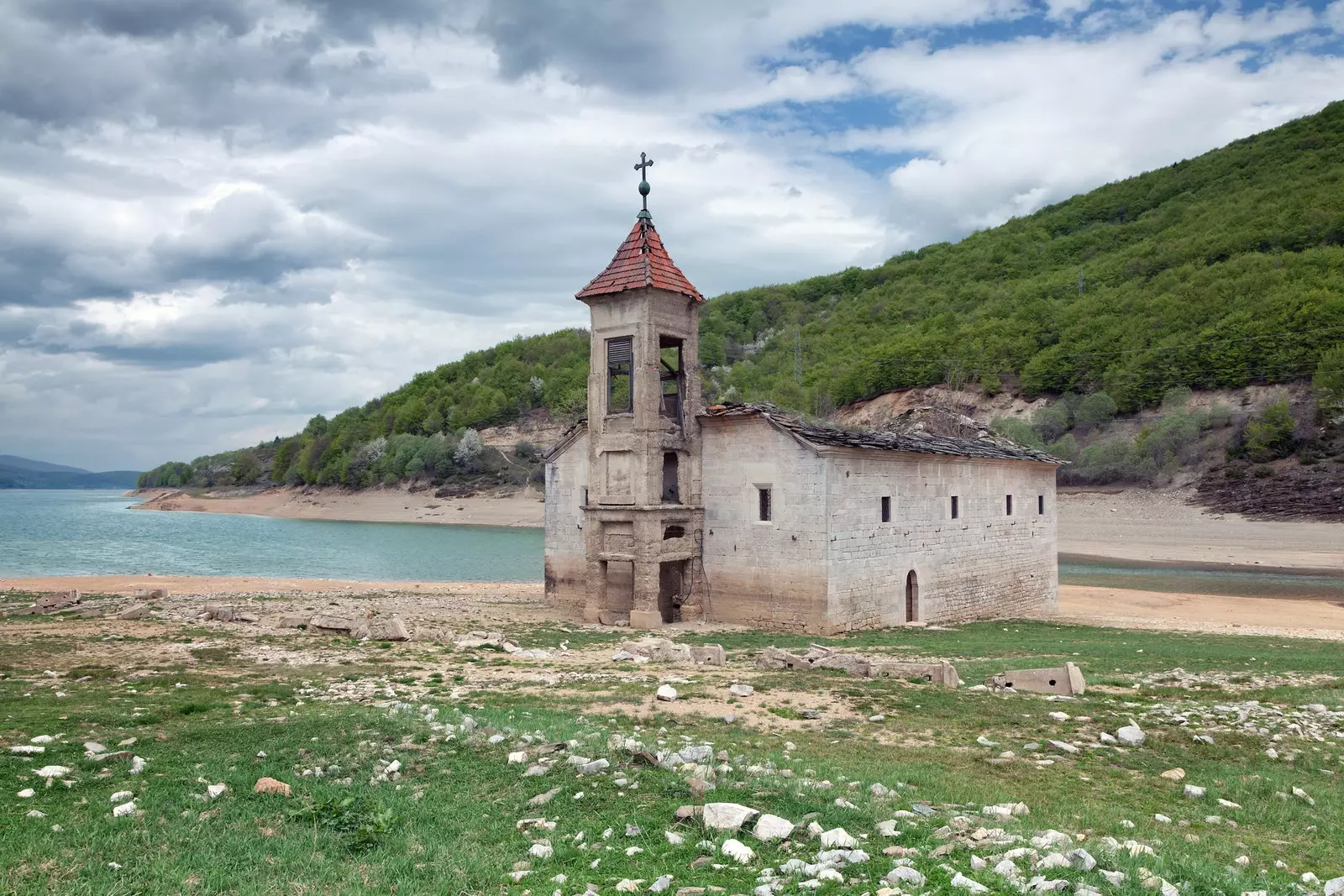
Church of Saint Nicholas
The lovers, in addition, during the previous days appear on television explaining what it means to be the chosen ones of those known as " Galiçnik weddings ”. Folklore in its purest form at 1,500 meters of altitude.
About 100 kilometers to the south appears the great tourist attraction of North Macedonia: the lake ohrid, the deepest and oldest in Europe . Here live more than 200 endemic animal species.
In summer, the important thing is to take a dip, while in winter events of national importance are held. But in general, the visit can be divided into two: the most natural option, centered on the lake, and a walk through the historic city of Ohrid.
Wild option starts at Struga , city with the charm of being in the shadow of Ohrid. 10 kilometers to the west appears Radozhda , the last city before Albania. there is the Church of the Archangel Michael , embedded in the Jablanica mountain since the 13th century, and life is more typical of a village than a tourist center.
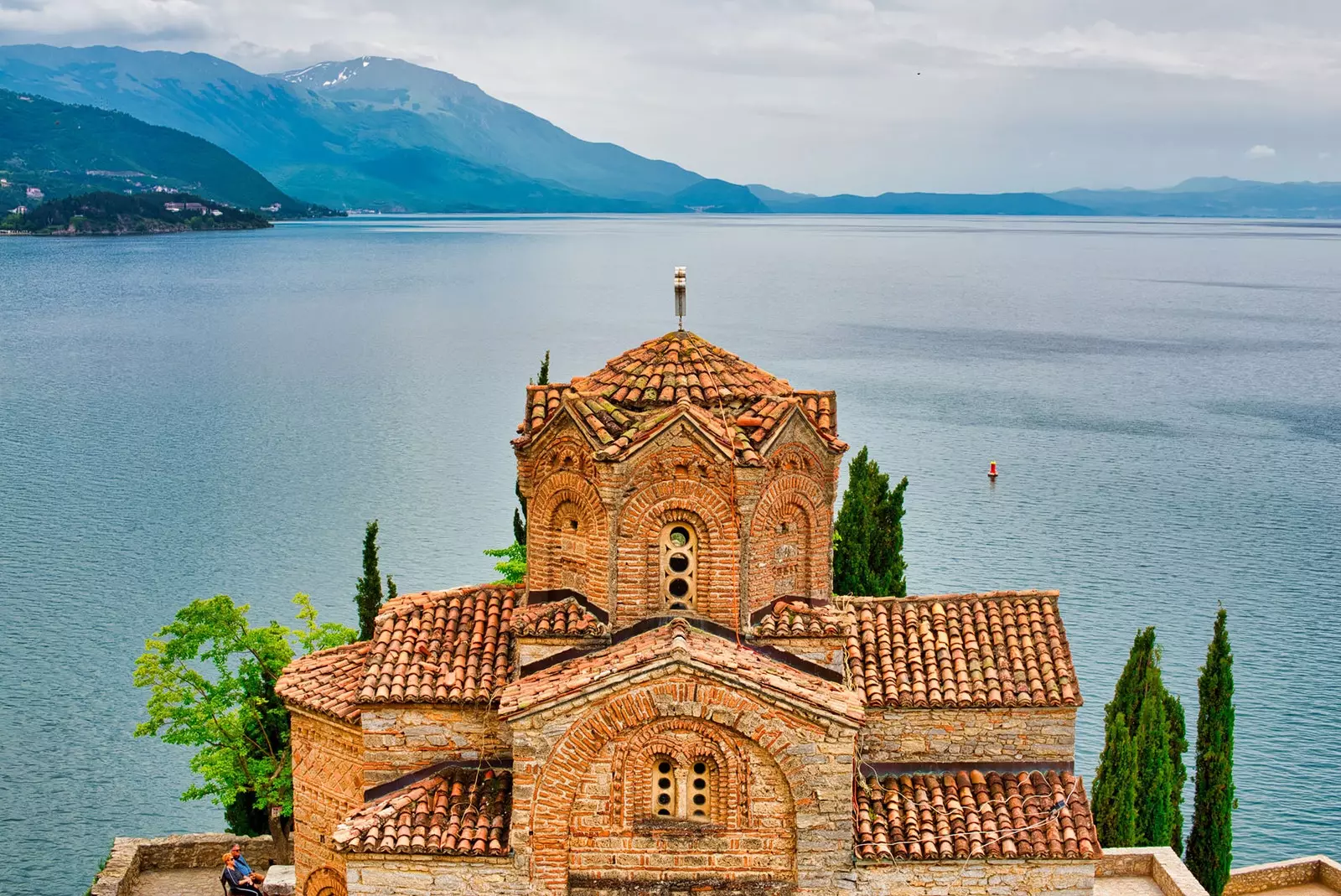
Spherical route to cross three great jewels of North Macedonia
Beaches , as here they call the areas on the shore of the lake enabled for rest, are anarchic, careless, perfect for those seeking solitude . The stay is around 10 euros, breakfast included, in the ** FreeFlow hostel **, run by a Californian, or the inn Villa Radozhda . Two options to enjoy spectacular dragonflies and nights illuminated by thousands of fireflies that, in other crowded areas of the lake, no longer have a place.
Throughout the Lake Ohrid region it is typical eat fish soup and ask for a starter garlic paste spread on bread . Public transport or collective taxis that appear in the center of cities or towns cost, in the case of routes Struga-Radozhda or Struga-Ohrid, less than 1 euro.
In addition, to stay there are many areas enabled for camping. Prices are usually around 5 euros, depending on how crowded the place is, and the cheapest option, as long as we take our tent, is camping. Scout Center : 2.5 euros per person . It is huge, and concentrates many scout groups in the country at the gates of the city of Ohrid , considered as UNESCO World Heritage Site since 1979.
Ohrid was a cultural and religious dissemination center for the Slavic world which began its rise in the 7th century. Here was built the first Slavic university in the Balkans and it was built the oldest monastery in the slavic world , the one of Saint Pantaleon . According to UNESCO, it is the city that best preserves the architectural traces of the time : in addition to the Churches of Hagia Sophia and Saint John Kaneo , its buildings and streets have more than 800 icons Byzantines between the 9th and 14th centuries.
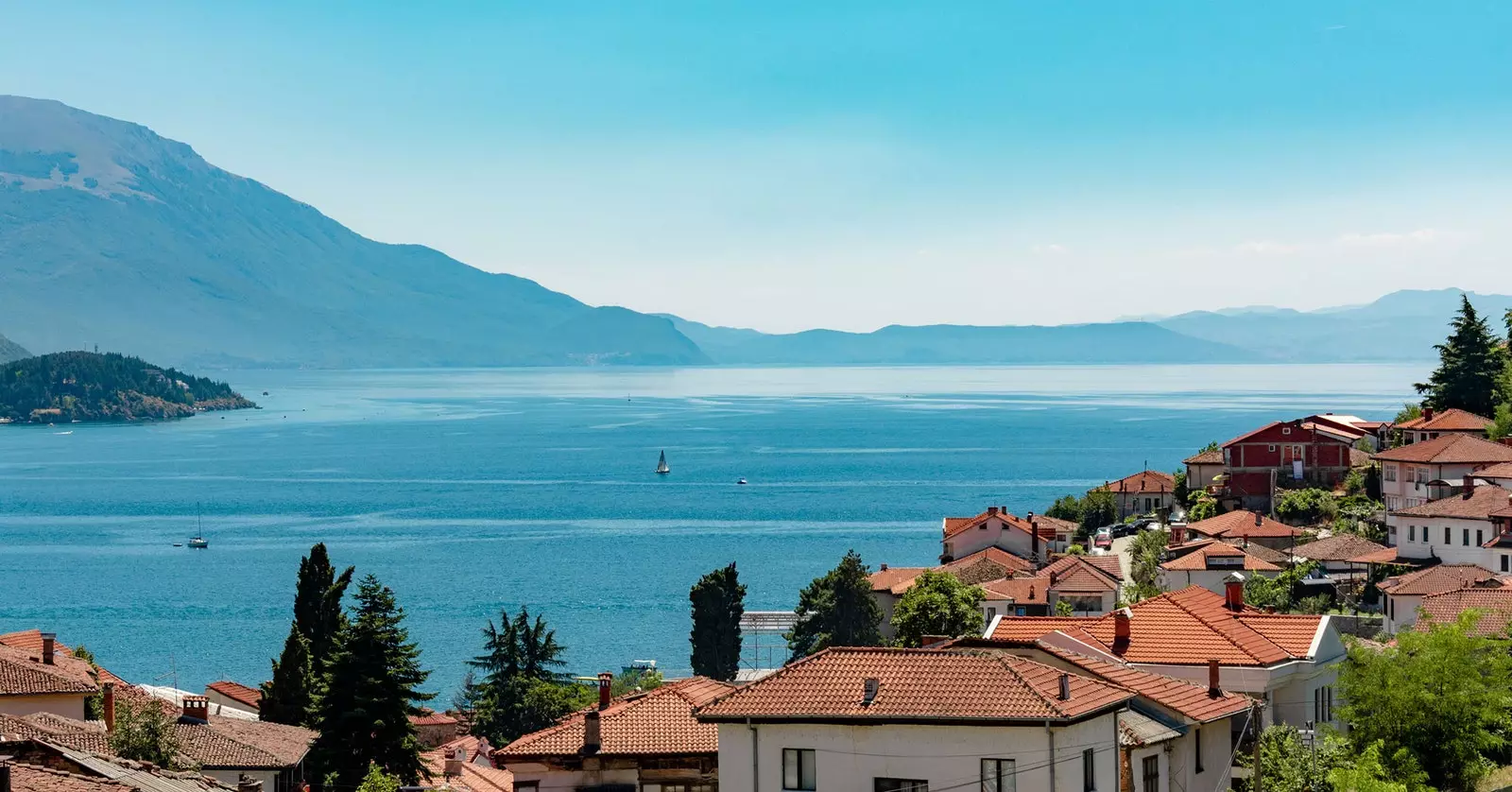
lake ohrid
In summer, thousands of tourists walk its cobbled and steep streets daily. Nevertheless, in winter, calm reigns : You can appreciate the beauty of this region without the hassle of mobile phones. A good date is January 19 , during the celebration of Vodiçi , the Orthodox festival that commemorates the baptism of Jesus Christ in the Jordan River.
That day, special for the locals, a cross is thrown into the lake that hundreds of people try to find. Whoever achieves such a feat, says tradition, will have a year of good fortune. Also, if you want to make a winter getaway in the heart of the Balkans , on January 13, in Vevçani, 30 kilometers from Ohrid, the famous ** Vevçani carnival ** is celebrated: the welcome to the new year of the Julian calendar for more than 1,000 years.
From Ohrid, you can prepare a Getaway to Galiçitsa National Park and, with more time, visit Lake Prespa , whose shore they share Macedonia, Albania and Greece . This lake, which has not yet experienced the harmful effects of tourism, stands out for an island full of snakes and birds known as Golem-Grad . The only way to get there is by paying a boat, although it is a risky visit: there are too many snakes.
But the defined route is different: from Ohrid, two hours by bus, 3 euros a ticket, is Bitola, known as the city of the consuls. At first sight, Bitola stands out for its neoclassical-style buildings on Sirok Street and by the dozen consulates still present in the city. The most prominent is that of Russia, in magnolia square , and realize the diplomatic importance that Bitola had during the Ottoman Empire.
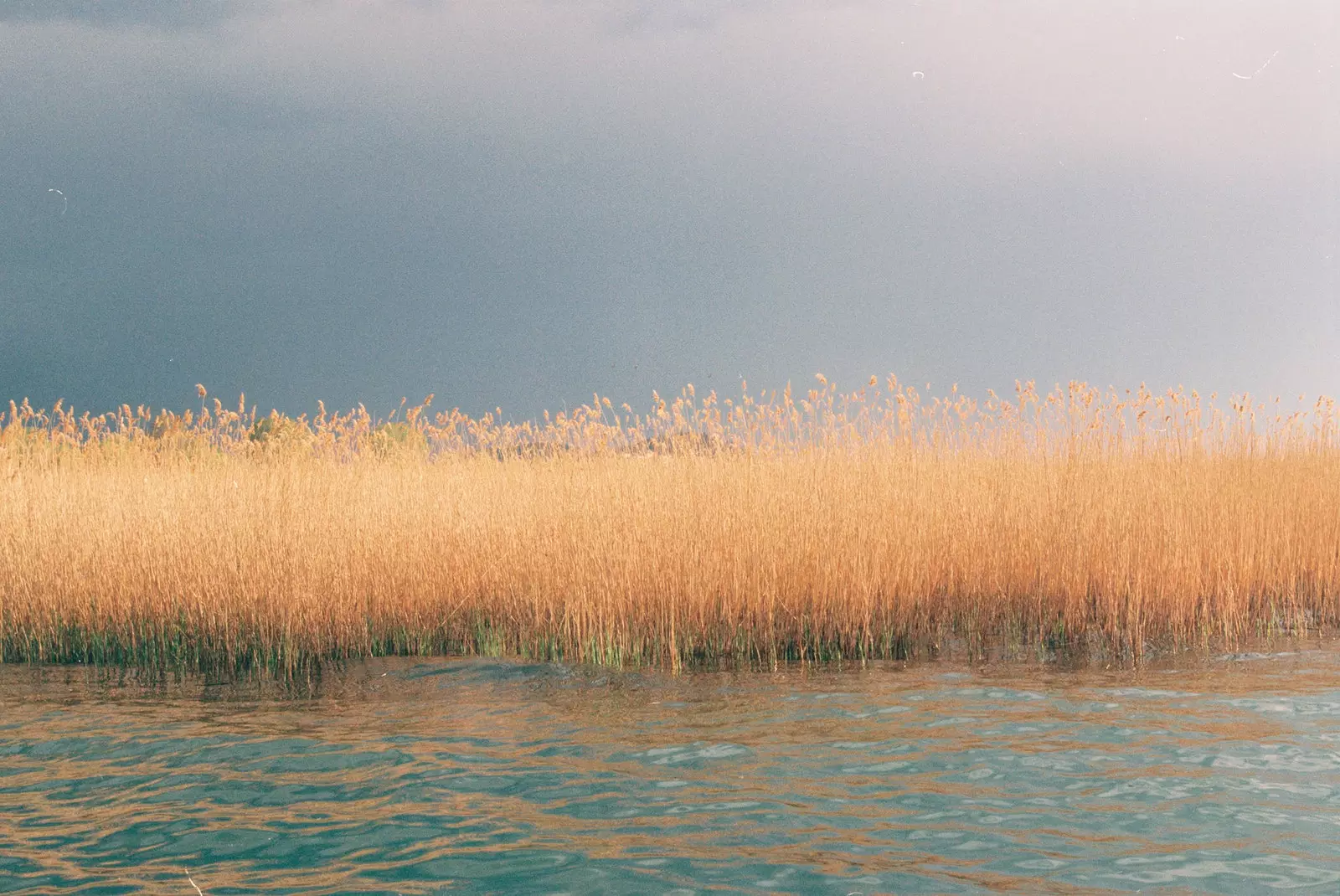
Lake Prespa
In the magnolia square , stand out two mosques and the ottoman clock tower . The more than 500 years of Ottoman presence they are evident above all in the historic center of the city. The renowned traveler of the seventeenth century Evliya Celebi reflected in his books that the region had 70 mosques and a 900-store bazaar.
It is still possible to visit the bustling bazaar ( Stara Carsija ), with those alleys of old buildings that begin after crossing the **Dragor River, and the covered bazaar (Bezisten) ** ; go to the four 16th century mosques, the one in Ishak Çelebi, Yeni, Haydar Kadi and Haci Mahmu t, of which only the façade remains and which is surrounded by shops and cafes that steal its interior space; and go shopping at a supermarket Philip II of Macedon Boulevard which has a facade that corresponded to a ottoman hamam.
But Bitola also has an important Christian aftertaste. In the city there 22 Orthodox churches, a Catholic cathedral and an evangelist church . Two 19th-century Orthodox cult centers stand out: the church of Saint Demetrius, and near the bazaar, although on the other bank of the River Dragor, the church of Santa Maria , known for its World War I frescoes salvaged from churches in Trnovo and Magarevo , villages surrounding the Pelister National Park, a must for lovers of mountaineering.
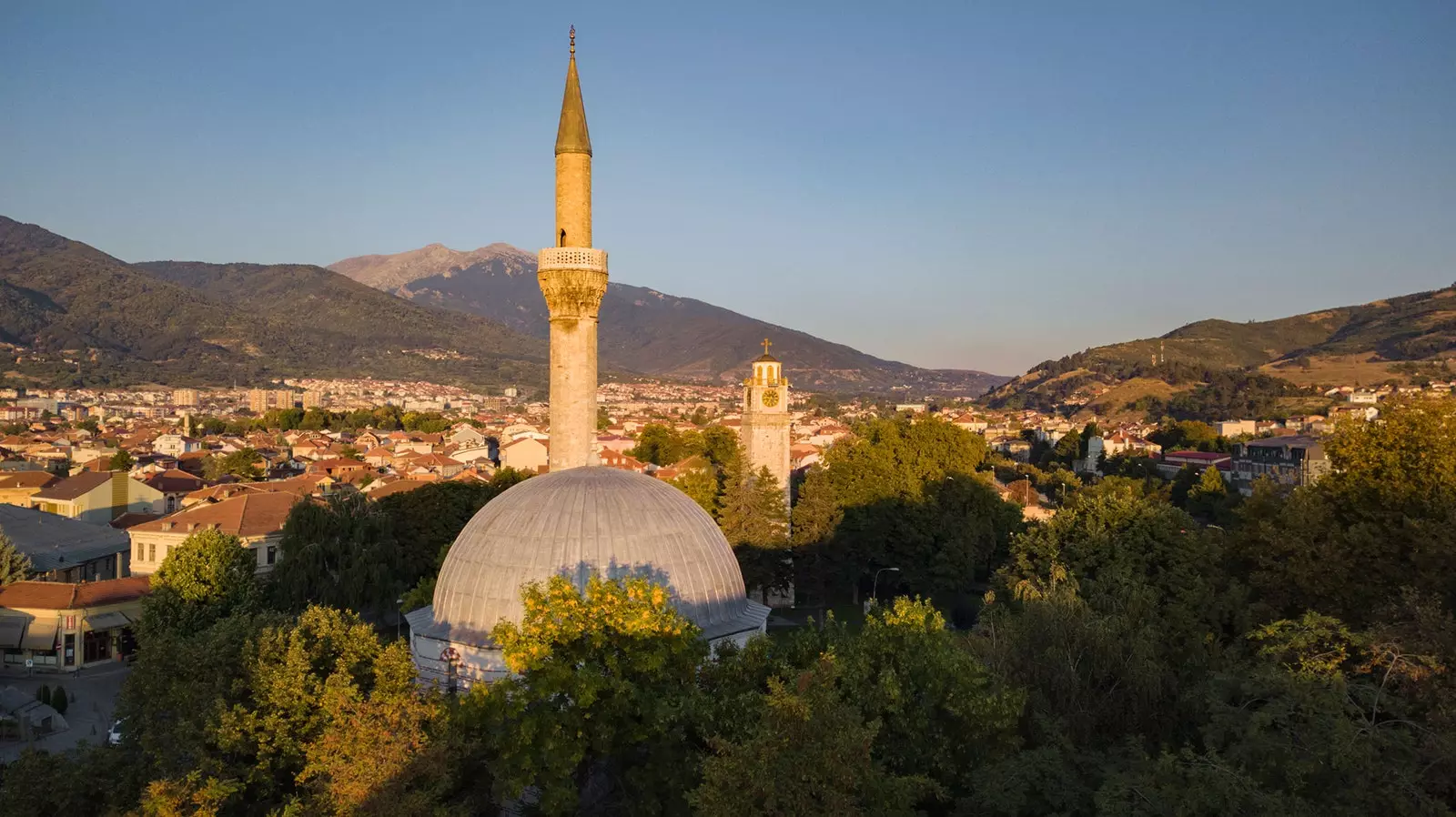
Bitola
On one side of the road that leads to Grecia, after passing the cemetery, one of the main charms of Bitola appears: the historic city of Heraclea Lyncestis , which lived its golden age during the occupation of the roman empire , which had in this city a crucial point of Via Egnathia.
Among other buildings, the Romans they bequeathed the amphitheater and the baths. Admission costs just over 2 euros , a bargain for those who enjoy this type of excursion, and will serve to understand the religious importance that Heracleia had.
It's time to go back to Skopje. But in the middle of the road, in a getaway that can be done in one day, it is not a bad idea to take a bus, collective taxi or train take us to Prilep : you eat one of the best grilled meats in Macedonia. One place: the **Kermes restaurant**.
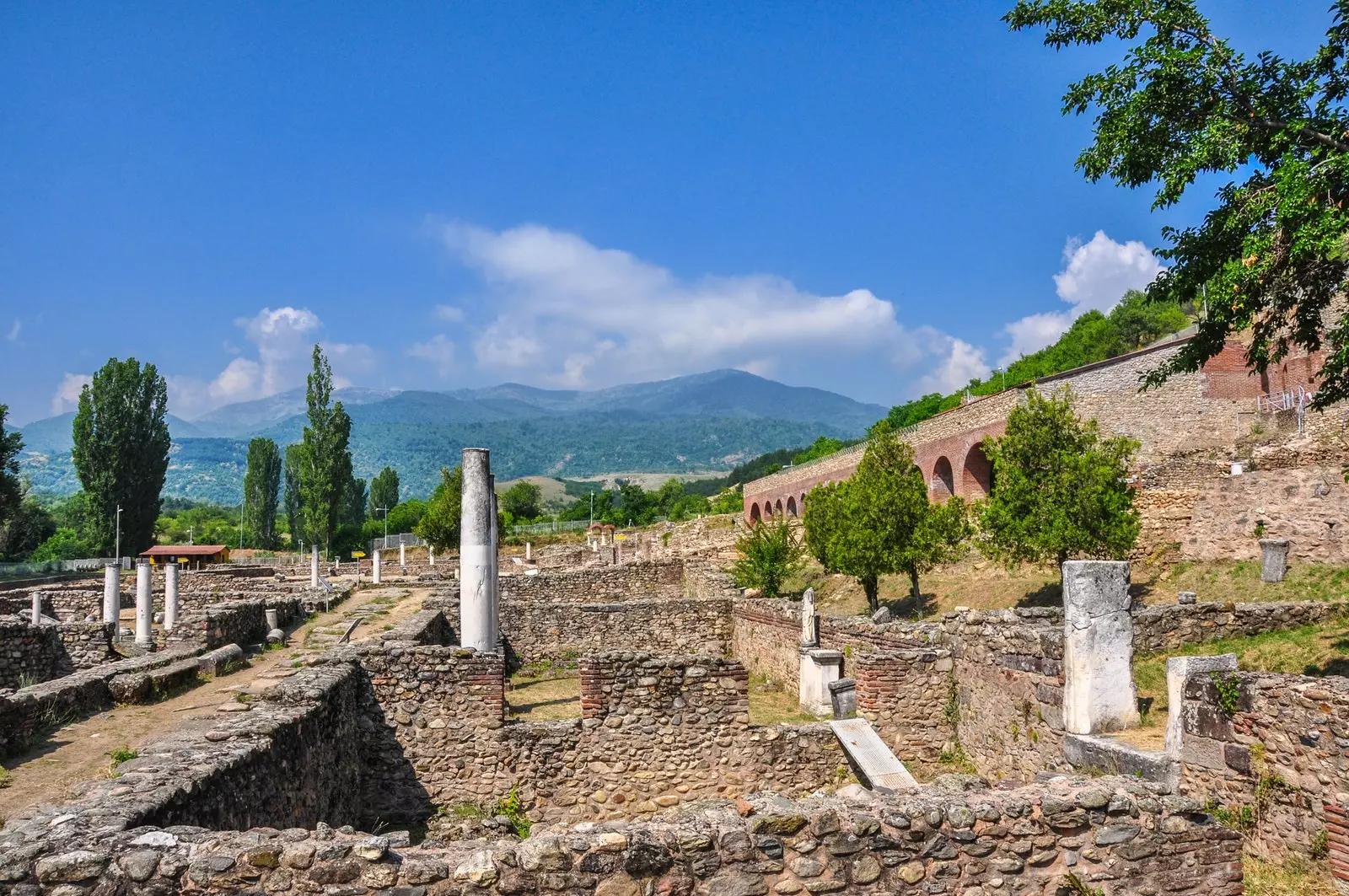
Heraclea Lyncestis
Then there are two options: to the west is the city of Krusevo , of great historical importance for the Macedonians: in 1903 they declared a short-lived republic during the Ilinden riots. At 1,350 meters above sea level, the makedonium Monument, dedicated to that and other subsequent events that marked the Macedonian identity.
To the East , on the other hand, you can visit the wine region par excellence: Kavadarci . Or maybe, from Prilep, go to the northernmost part of Macedonia, next to **Serbia**, and spend a few hours at the Kokino Bronze Age astronomical observatory. Although then the sphere would be enlarged, and the route would force us to doodle through many of the lost corners of North Macedonia.
